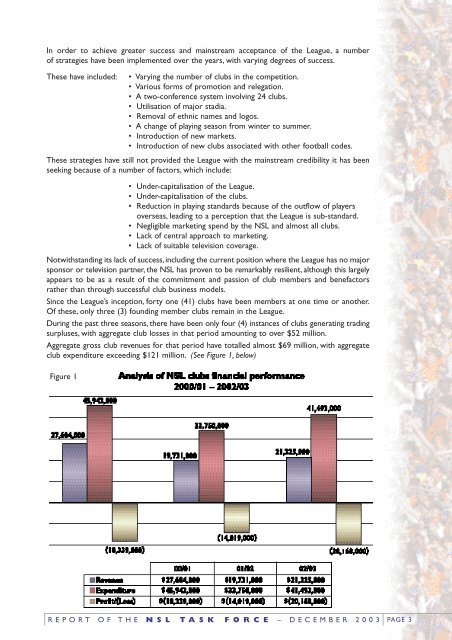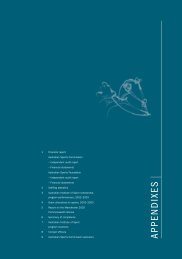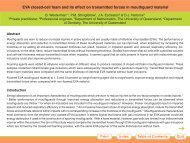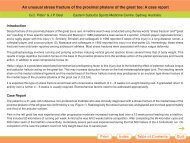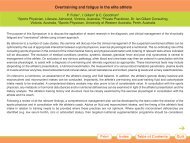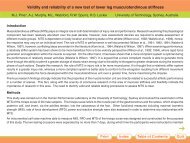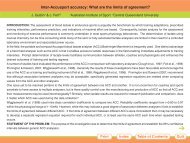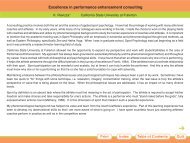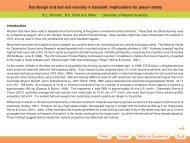On behalf of nsl task force - Australian Sports Commission
On behalf of nsl task force - Australian Sports Commission
On behalf of nsl task force - Australian Sports Commission
Create successful ePaper yourself
Turn your PDF publications into a flip-book with our unique Google optimized e-Paper software.
In order to achieve greater success and mainstream acceptance <strong>of</strong> the League, a number<br />
<strong>of</strong> strategies have been implemented over the years, with varying degrees <strong>of</strong> success.<br />
These have included: • Varying the number <strong>of</strong> clubs in the competition.<br />
• Various forms <strong>of</strong> promotion and relegation.<br />
• A two-conference system involving 24 clubs.<br />
• Utilisation <strong>of</strong> major stadia.<br />
• Removal <strong>of</strong> ethnic names and logos.<br />
• A change <strong>of</strong> playing season from winter to summer.<br />
• Introduction <strong>of</strong> new markets.<br />
• Introduction <strong>of</strong> new clubs associated with other football codes.<br />
These strategies have still not provided the League with the mainstream credibility it has been<br />
seeking because <strong>of</strong> a number <strong>of</strong> factors, which include:<br />
• Under-capitalisation <strong>of</strong> the League.<br />
• Under-capitalisation <strong>of</strong> the clubs.<br />
• Reduction in playing standards because <strong>of</strong> the outflow <strong>of</strong> players<br />
overseas, leading to a perception that the League is sub-standard.<br />
• Negligible marketing spend by the NSL and almost all clubs.<br />
• Lack <strong>of</strong> central approach to marketing.<br />
• Lack <strong>of</strong> suitable television coverage.<br />
Notwithstanding its lack <strong>of</strong> success, including the current position where the League has no major<br />
sponsor or television partner, the NSL has proven to be remarkably resilient, although this largely<br />
appears to be as a result <strong>of</strong> the commitment and passion <strong>of</strong> club members and benefactors<br />
rather than through successful club business models.<br />
Since the League’s inception, forty one (41) clubs have been members at one time or another.<br />
Of these, only three (3) founding member clubs remain in the League.<br />
During the past three seasons, there have been only four (4) instances <strong>of</strong> clubs generating trading<br />
surpluses, with aggregate club losses in that period amounting to over $52 million.<br />
Aggregate gross club revenues for that period have totalled almost $69 million, with aggregate<br />
club expenditure exceeding $121 million. (See Figure 1, below)<br />
Figure 1<br />
REPORT OF THE N S L T A S K F O R C E – DECEMBER 2003 PAGE 3


